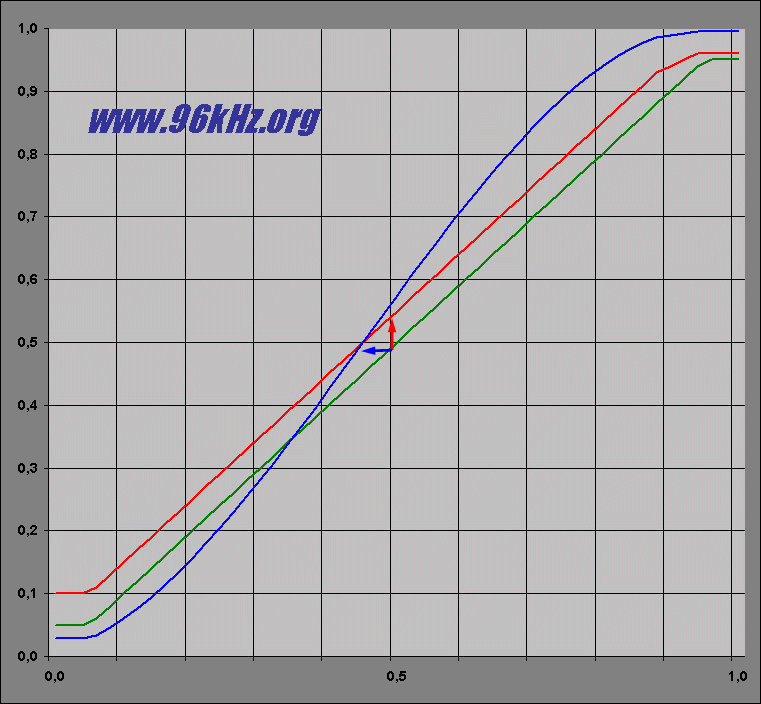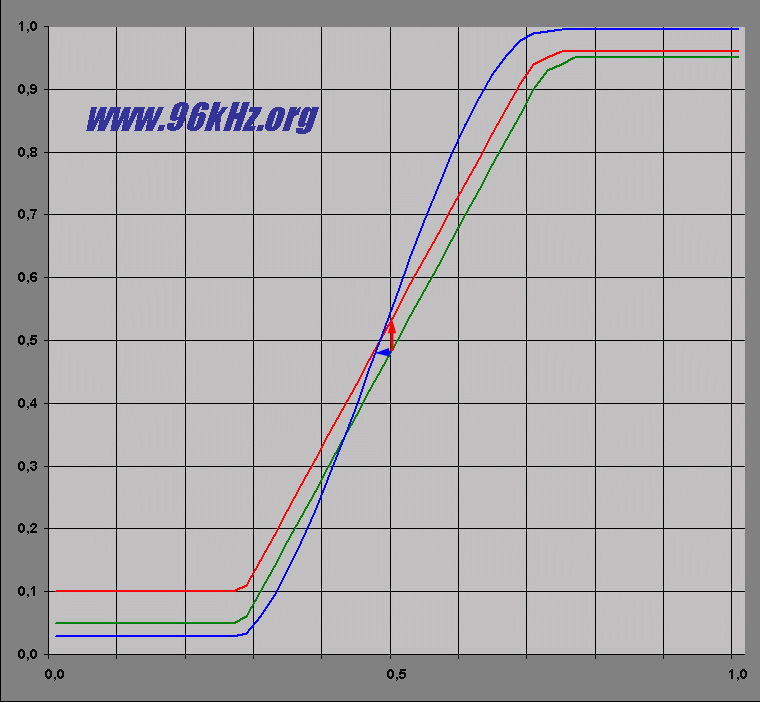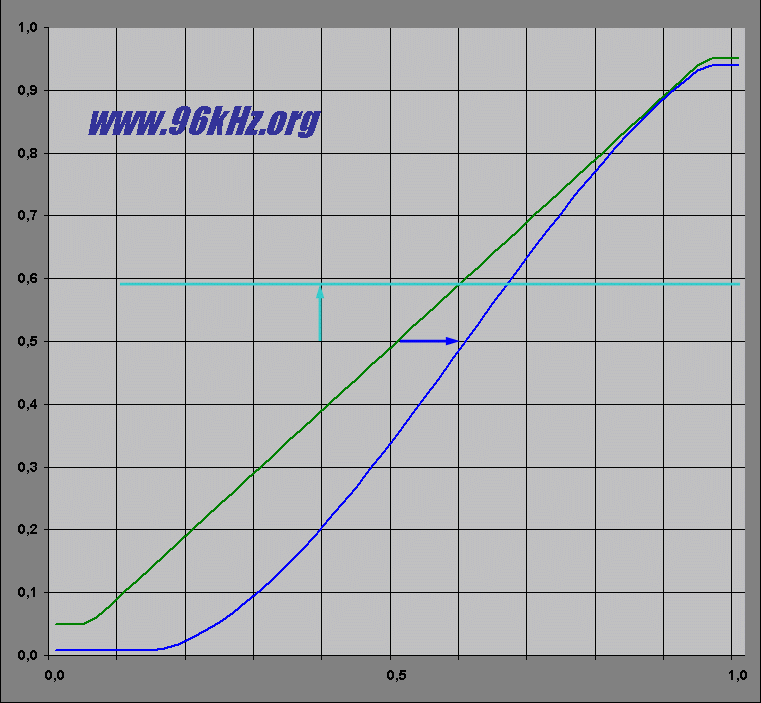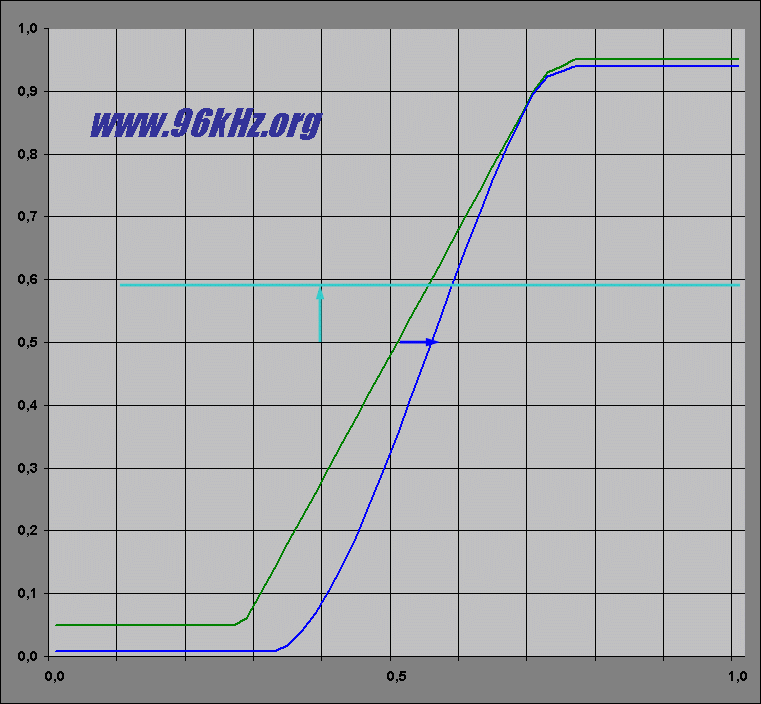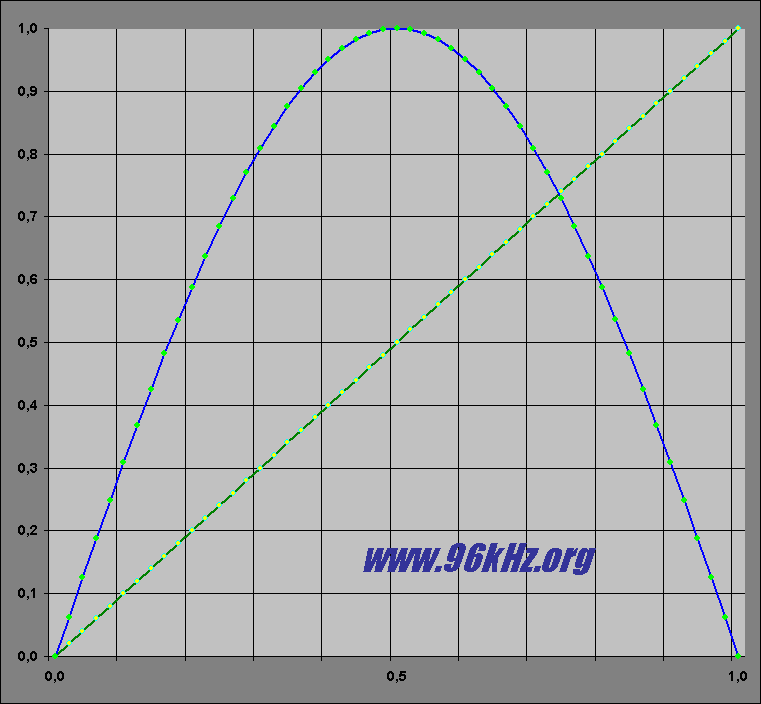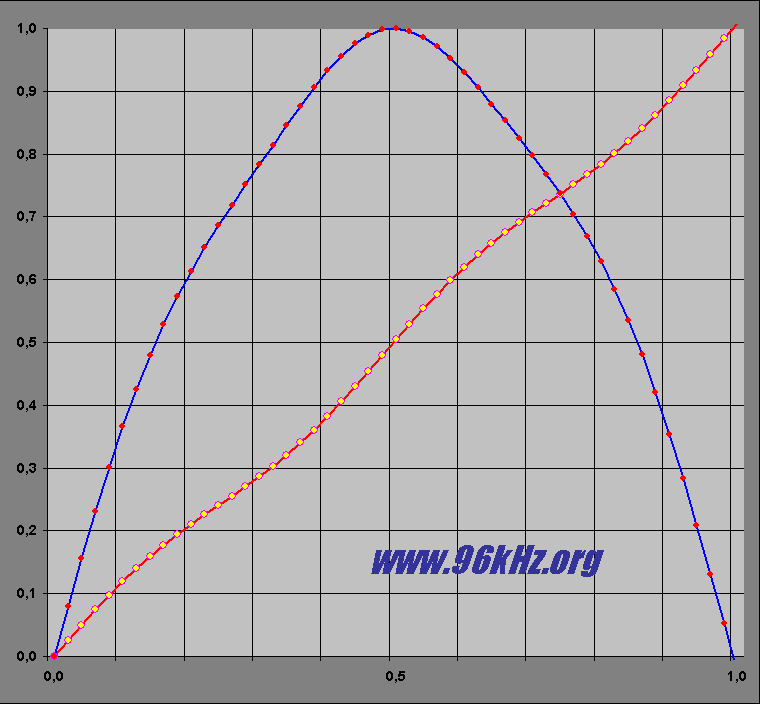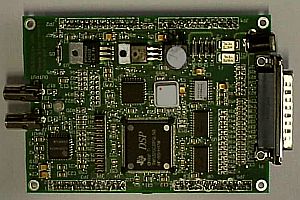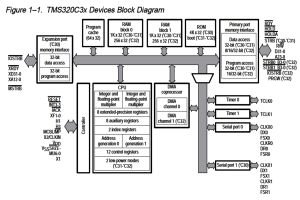| 96 kHz.org |
| Advanced Audio Recording |
|
Introduction to Jitter This page describes the impact
of jitter on high quality audio material. Jitter is always present in
digital systems and mostly caused by the analog effects like temperature,
voltage instability which affects already frequency synthesis in oscillators
at the beginning of the clock path and subsequently also it' processing
by e.g. amplifiers and clock drivers.
The point of triggering is important, because when jitter is not fully removed, it directly affects the signal quality by introducing additional harmonics: Starting from a perfect sine wave with 100% linear points of time (x-axis) image 5 the false points of time distort the wave according to the local steepness of the signal like shown in image 6. This applies during recording in ADCs (analog digital converters) as well as in DACs (digital analog converters).
The negative Impact of Jitter Jitter being present at the point of sampling time in an ADC, can hardly be removed. If so, the clock has to analyzed in detail and a dynamic resampling has to be applied. For hi-frequent jitter this can be done in a PLD, meaning digital hardware, for low frequent jitter an analysis of the audio material can help. With complex music applications it is possible to measure the frequencies with a FFT and reconstruct the jitter introduced by bad tapes or instable tape speeds. This is best done offline with Software. The analysis can be done in real time making use of a DSP for at least the FFT.
In 1998 some tests had been made with a TMS320-System from Texas Instruments which also is used for my other audio applications. A high speed DSP system is able to produce a small FFT in real time. By comparison of the movement of the frequencies, the average "vibrato" in the music data stream can be measured and trimmed.
Conclusion and Summary DSPs can be used to lower the problem of jitter after recording.
|
| © 2000 - Jürgen Schuhmacher |
